Cultural and historical relics in Quang Ninh will take you on a fascinating journey of discovery,which preserves the proud cultural and historical marks of the mining land. Coming to Quang Ninh,take some time to visit these unique relics to feel the beauty and depth of a unique heritage region. Let's take a look at these relics with 63Stravel!
Top 27 famous historical relics in Quang Ninh attracting tourists
Let's see the list of 27 famous historical relics in Quang Ninh that many tourists visit and explore.
Trieu Khe communal house
Trieu Khe commune is associated with the thang moc land of King An Sinh Tran Lieu - father of Hung Dao Vuong Tran Quoc Tuan,with a rich history dating back to the Tran dynasty. By the end of the 18th century,a number of families from Kim Thanh,Hai Duong came to reclaim the land along the Kinh Thay River,establishing crowded villages.
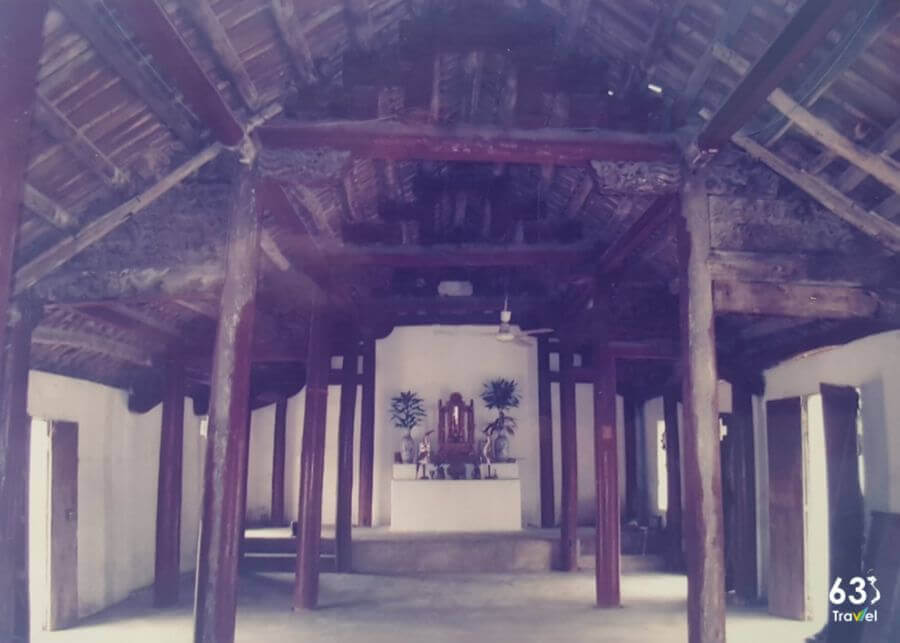
Trieu Khe communal house - a place to preserve Vietnamese cultural values
In 1887,Trieu Khe village was officially established and built a village communal house to worship King An Sinh Tran Lieu and other historical figures. Trieu Khe Communal House not only preserves unique architecture but is also a place to store many precious artifacts such as ordinations,stone stele and carvings of the Nguyen Dynasty.
Over the years,this relic has degraded,and in 2023,a renovation project was approved to preserve and embellish the cultural and historical value of Trieu Khe communal house. At the same time,improve the cultural life of the local community.
La Pagoda
La Pagoda's literal name is Tam Thanh Tu,located in Cam Lien village,Cam La commune,built in the 16th century under the Nguyen dynasty,as a place for cultural and spiritual activities of local Buddhists. The pagoda also preserves many Nguyen Dynasty-style artistic sculptures,reflecting profound cultural values.
Every year,the La Pagoda festival takes place on the 5th and 6th of the first lunar month with many traditional activities such as swinging,singing and playing chess. With unique cultural value,in 2006,La Pagoda was ranked as a provincial cultural and historical relic.
Lai Pagoda (also known as Linh Ngai Tu)
Lai Pagoda (also known as Linh Ngai Tu) is located in Vi Khe village,Lien Vi commune,Quang Yen town,Quang Ninh province. This ancient temple was built in the 16th century with simple original architecture,and has undergone many restorations by generations of believers.
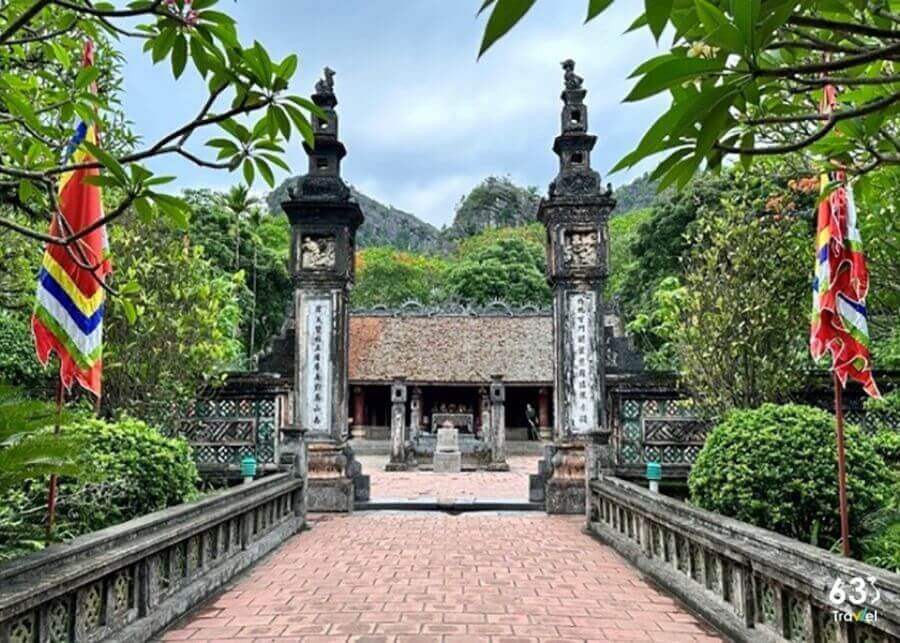
Lai Pagoda (also known as Linh Ngai Tu) is ranked as a Provincial Monument
The pagoda stands out with more than 125 precious artifacts from the Mac and Nguyen dynasties,including Buddha statues,stone stele,and bronze bells,with high artistic value. In particular,the location of the pagoda is located on the land adjacent to the throne of two river branches,creating a charming scene.
During the resistance war,the pagoda was a place to store documents and weapons of the revolution. With a rich history and cultural value,Lai Pagoda has been recognized as a provincial architectural and artistic relic since 2000,becoming a spiritual fulcrum and precious heritage of the locality.
>> Reference: Compilation of beautiful photos of Quang Ninh tourist destinations
Yen My Pagoda - Phuc Khanh Tu
Yen My Pagoda (also known as Phuc Khanh Pagoda) is located in Tan Tien village (Le Loi commune,Ha Long city). This is an ancient temple with bold traditional architecture from the late 18th and early 19th centuries.
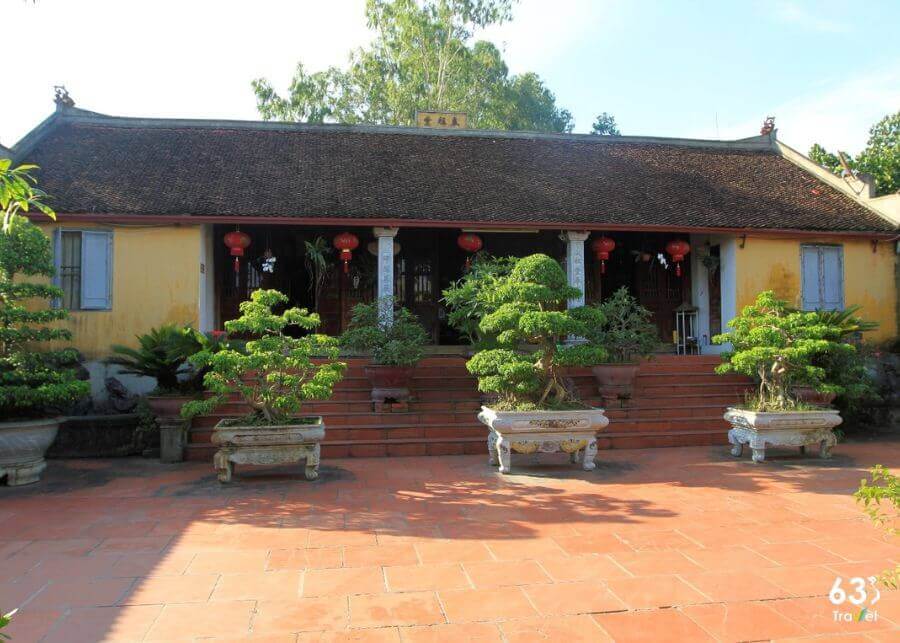
Yen My Pagoda - Phuc Khanh Tu Ranked as Provincial Relics
In 1854,the pagoda was renovated with contributions from local people and has undergone many restorations thereafter. Located on high ground,the pagoda faces south,according to beautiful feng shui: in front there is a river,behind are fields,on both sides are flanking mountains. The pagoda's architecture is in the Dinh style,including three front halls and two back halls.
Despite the passage of time,the pagoda still maintains a rich system of Buddha statues and worship objects,with 23 wooden statues,statues of Tam The,newborn Sakyamuni,Jade Emperor... The pagoda campus is about 1000m²,with a place to worship the Mother Goddess and many other works. auxiliary program. In 1999,Yen My Pagoda was recognized as a provincial-level historical and cultural relic,attracting a large number of tourists to worship and learn about local culture.
Hoang Xa pagoda communal house
Hoang Xa pagoda communal house (also known as Nhi communal house) is a meaningful historical relic of Hoang Xa commune. During the resistance war against the French,this place became a revolutionary base,witnessing many fierce battles between our troops and the enemy. To commemorate the heroic martyrs who sacrificed their lives in the resistance wars against the French and Americans,the government built a memorial right at the temple grounds.
This cluster of relics includes three gates,communal houses,pagodas and martyrs' memorials,with traditional nail (J) architecture. After many restorations,Hoang Xa communal house and Hoang Hoa pagoda have been embellished,preserving the typical ancient architecture. Hoang Xa Pagoda Communal Festival,which takes place on January 9-10 every year,attracts a large number of villagers and tourists to participate with formal rituals and folk games such as tug of war,football...
With cultural and historical value,Hoang Xa pagoda was ranked as a provincial historical relic in 2016. Currently,conservation and restoration work is still being carried out,needing contributions from local communities. Buddhists and sponsors to preserve and promote the value of relics for future generations.
Nhue Ho Pagoda (Quang Phuc Pagoda)
Nhue Ho Pagoda (also known as Quang Phuc Pagoda) is a Provincial cultural and artistic relic,rich in historical value and ancient architecture. Built about 400 years ago,the pagoda is not only a place to worship Buddha and the village saint,but also preserves many rare relics. Among them,the highlight is 15 terracotta statues of the Le Dynasty - a rare set of intact terracotta statues in Quang Ninh.
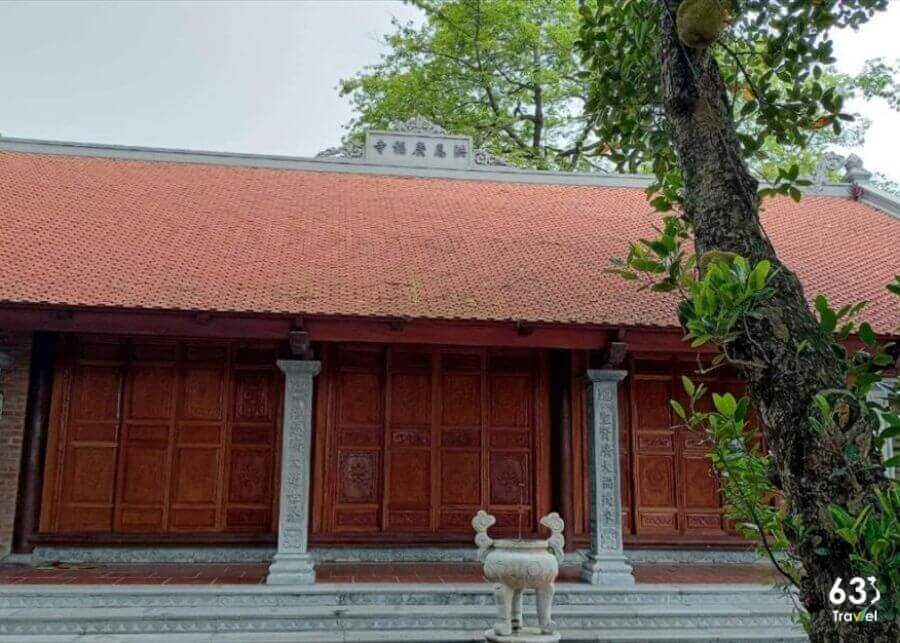
Artistic relics of Quang Phuc Pagoda (Nhue Ho Pagoda)
During the resistance period,Nhue Ho Pagoda played an important role,becoming a revolutionary base,a warehouse for storing supplies and a shelter for road and bridge construction workers. In particular,this place used to be where the Venerable Thich Thanh Binh - a monk who directly participated in the resistance movement against the French - lived as an abbot and had a memorial stupa built right in front of the pagoda. In 2013,the President posthumously awarded the Venerable the Great National Solidarity Medal,recognizing his great contributions to the revolution and national unity.
My Cu Communal House
My Cu Pagoda is located in My Cu village,Hung Dao commune,Dong Trieu town,and is an attractive destination for tourists who love spiritual culture. Located on the side of Che mountain,the pagoda carries profound historical imprints,marking the presence of King Tran Nhan Tong at Ngoa Van temple in 1308. During the prosperous period of the Truc Lam sect,My Cu pagoda was was born,contributing to the network of 800 large and small temples throughout the region.
The pagoda has Dinh-shaped architecture,expanded with buildings such as the main pagoda,ancestral house and monk's house,forming the shape of Khau. Over time,although destroyed in wars,the pagoda still retains its beauty and ancient architecture.
Visitors will not be able to help but be impressed with the meticulous Buddha statues,from the statues of Amitabha,Sakyamuni to Avalokiteśvara. All are skillfully crafted from clay,bringing a lively soul to each work.
In particular,My Cu Pagoda is one of the few pagodas in Quang Ninh that owns a clay Buddha statue,along with elaborately carved details on the roof. When coming here,visitors can not only worship but also expand their knowledge about the religious culture of the Vietnamese people.
Binh Luc communal house
Binh Luc communal house is located in Binh Luc Ha area,Hong Phong ward,and is the place to worship Kham Minh Thanh Vu Hien Dao An Sinh king Tran Lieu,father of Hung Dao king Tran Quoc Tuan. With the oldest stele dated 1696,the communal house is known as one of the most ancient communal houses in the Northeast,bearing the architectural imprint of the Le Trung Hung period.

Binh Luc Communal House - An old communal house in Quang Ninh
Despite many restorations,the communal house was seriously degraded in the mid-twentieth century and burned in the 70s and 80s,leading to its complete collapse. In 1995,local people built a small,simple communal house on the old foundation to serve the religious needs of the community.
Temple of Saint Hang Son
Hang Son Holy Temple is located in the complex of rich historical and cultural relics of Yen Duc commune,where there are outstanding landscapes such as Dong Thuy mountain,Con Chuot mountain,Canh Huong pagoda and Cave 73. According to tradition Legend has it that Saint Hang Son is a talented young man who turned into a carp,helped the villagers and was worshiped by the people of Yen Khanh and Quy Khe villages to honor his merits.
Built during the Tran Dynasty,the temple represents a combination of Buddhism and the Vietnamese people's belief in God worship and Mother Goddess worship. Located on a high mound,surrounded by mountains and green rice fields,the temple currently preserves many precious artifacts such as stone incense bowls of the Le Dynasty and ordinations of the Nguyen Dynasty,proving the historical value of the temple. It.
Despite experiencing natural disasters and wars,the temple was restored in 1992 and continues to be preserved to this day. On March 9,2023,the People's Committee of Quang Ninh province recognized the Temple of Saint Hang Son as a provincial relic,a pride of the Yen Duc people,affirming its historical and cultural value and raising awareness of conservation. protect the heritage of this land.
Vung Duc historical and scenic relic cluster
Vung Duc Scenic Area is one of the most prominent and attractive destinations of Cam Pha city,Quang Ninh,always leaving a deep impression in the hearts of visitors when they have the opportunity to set foot here. This is a tourist destination not to be missed in the journey to discover the beauty of this beautiful mining land.
In the past,Vung Duc was a deep water area,located between two majestic mountain ranges: Ban Co and Cap Rua. During the French colonial period,in order to transport coal back home,they built the road from bus station 52 to Vung Duc port that we still know today.
Heavy rains from the western mountains have created strong flows carrying minerals from the burnt coal seams into the sea,making the sea water in Vung Duc a characteristic opaque yellow color. While other seas sparkle blue,the water in Vung Duc has its own mystery,reminiscent of the painful but heroic history of this land.
The relic complex includes Vung Duc Temple,Martyrs' Temple,Memorial and Vung Duc cave system,where shimmering stalactites create a mysterious and quiet space. Visitors coming here not only have the opportunity to admire the beauty of nature but also have the opportunity to review the nation's heroic history,thereby nurturing pride and a sense of responsibility towards future generations. Vung Duc relic site is currently attracting over 50,000 visitors each year,and is always focused on investing and upgrading to best serve the needs of tourists.
Dinh Hung Hoc
Hung Hoc Communal House is a historical relic worshiping Duke Vu Hoang Dao - a figure with great contributions to developing the homeland,eliminating epidemics and protecting villages. He was the first Doctor of the Vu family at Hung Hoc and made important contributions to the reclamation and reclamation of the sea,forming Quang Yen town and Quang Ninh province today.
Legend has it that when he died,King Khai Dinh appointed him Dong Hai God,the protector of fishermen and Hung Hoc village,where people often come to pray every time they go to sea. The communal house also worships Huyen Quang,the founder of the Truc Lam Zen sect - an important cultural figure of the nation.
With unique architecture and many valuable antiques,Hung Hoc communal house is not only a place to preserve local beliefs but also a destination to research the history and culture of Quang Ninh. The communal house has been recognized as a national historical site,affirming the cultural and historical value of this place.
Dinh Luu Khe
Luu Khe Communal House,named after Luu Khe village,was built to worship the two Pioneers Do Do and Dao Ba Le - who contributed to gathering people and exploring the alluvial ground at the mouth of the Bach Dang River in 1434,creating the Luu Khe village today. According to remaining documents and legends from the elders,the communal house was built in 1822 and has undergone many renovations,with one of the major renovations in 1942,when the communal house was roofed with Western tiles and built surrounding stone wall.
In 2006,the communal house was upgraded again,preserving classical architectural elements and restoring some items,making the place of worship increasingly spacious and beautiful. The communal house not only worships Do Do and Dao Ba Le but is also linked to the nearby temple worshiping Tran Hung Dao.
Despite many renovations,the communal house's structures and sculptures still retain the traditions of 17th and 18th century folk art,with exquisite reliefs of dragons,clouds and feng shui symbols. Luu Khe Communal House has been recognized as a National Monument since 1995 thanks to its unique historical and artistic value.
Dinh Phong Coc
Phong Coc communal house (or Dinh Coc) located in Area 4,Phong Coc ward,Quang Yen town,Quang Ninh province,is one of the oldest and largest communal houses in Ha Nam area. Located in a central location,the communal house was built on high ground,facing Southeast,overlooking the Cua Dinh river and surrounded by ancient Bodhi trees.
The architecture of the communal house's roof is tiled with humorous noses and the roof embossed with the image of two dragons flanking the sun,creating a serene beauty. Meanwhile,the large green stone communal house yard used to be the meeting place of Coc market before being relocated to preserve the relics.
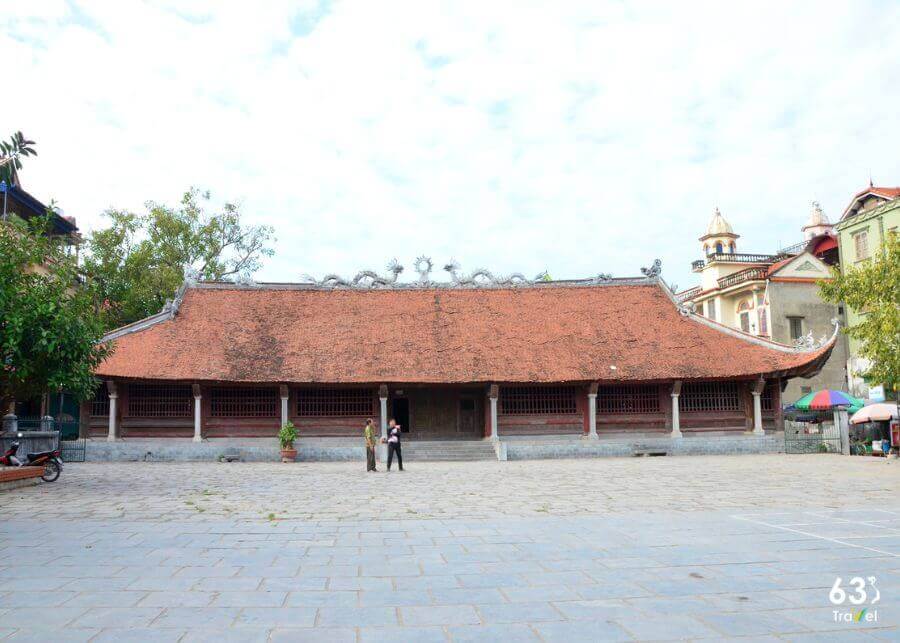
Unique architecture of Phong Coc communal house in Quang Ninh
Phong Coc communal house includes a front hall,a worship hall and a harem,including:
The front hall was built at the end of the 17th century,with a solid structure and large columns in the "upper autumn,lower summer" style.
The altar was built in Canh Thinh year (1800) in the Later Le style with sophisticated sculpture.
The harem connected to the altar is a place to worship Thanh Hoang and Than Nong,figures with important roles in local history and culture.
Not only has architectural value,Dinh Coc is also a cultural center,a place to preserve the customs and traditions of the people at the seaport. Traditional festivals such as the rain praying ceremony and the new rice festival are held annually,expressing aspirations for a prosperous and peaceful life. These good cultural values are still preserved and promoted to this day.
Quan Dai Temple
Quan Dai Temple is located in La Khe village,Tien An commune,Quang Yen district,worshiping two great mandarins Truong Quoc Dung and Van Duc Giai of the Nguyen Dynasty. They led the army and people of Quang Yen to fight against the French invaders and their henchmen,protecting the Fatherland's borders.
Truong Quoc Dung was a talented general and influential cultural figure in the mid-19th century. He made many contributions to the court and was posthumously awarded a noble rank by King Tu Duc. Van Duc Giai,also known as Van Duc Khue,stood out for his talent and virtue,leading the army in campaigns against the French colonialists.
When two generals died in the battle at La Khe station,legend has it that their two elephants took their bodies to the bamboo forest,where the villagers built a temple. Quan Dai Temple is not only a place to commemorate the heroes' achievements but also the cultural center of the village,with a "death anniversary" festival held every year.
The temple has a Nhi-shaped architecture and was rebuilt in 1993. Currently,the temple still preserves many precious artifacts related to the lives and careers of the two heroes such as inscriptions,ordinations... expressing their loyalty. villagers' gratitude to those who sacrificed their lives for the country.
Dinh Hai Yen
Hai Yen communal house,also known as "Hai Yen communal house," is located in Tay hamlet,Hai Yen village,Yen Hai commune,Yen Hung district,Quang Ninh. Previously,the village was called Hai Trieu,formed in the Le Dynasty by residents from Tuan Chau and Hai Duong who came to reclaim the sea. By the early 19th century,the village changed its name to Hai Yen.
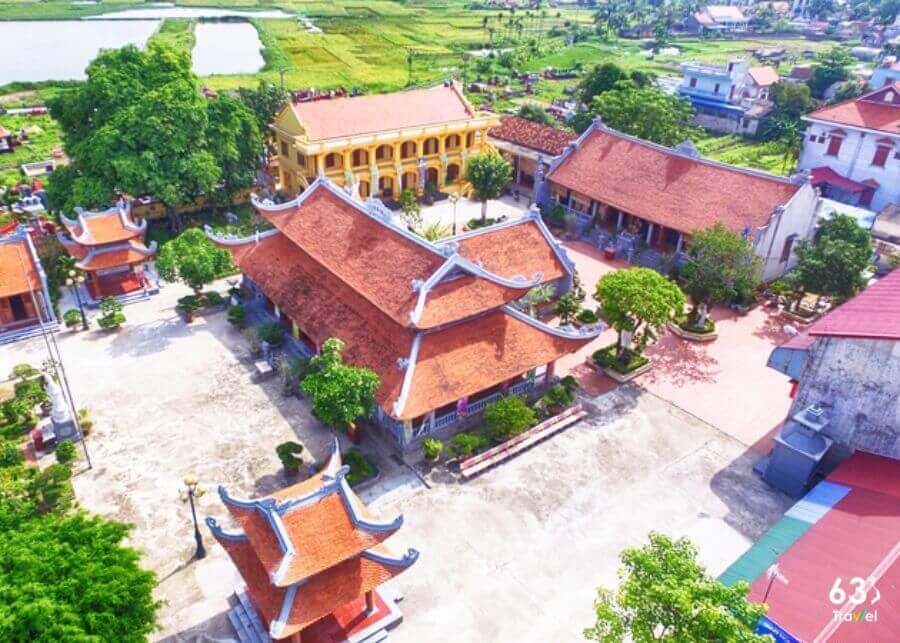
Hai Yen communal house in Quang Ninh
Built in the Later Le Dynasty,Hai Yen Communal House is the result of the effort and financial contribution of the people in the village. Through many restorations,especially in 1815 and 1963,the communal house still retains its ancient architectural beauty with wooden structures and curved tiled roofs like the bows of boats.
The communal house worships three gods,the most prominent of which is "Dai Hai Pham Chi Chi Than",Pham Tu Nghi,a military general of the Mac Dynasty,honored as the village's Tutelary God. Exquisite carvings on the communal house with images of dragons,flowers and four sacred animals create a vivid picture,reflecting the unique architectural art of the Later Le period. Hai Yen communal house is not only a valuable cultural heritage but also the pride of local people.
Tien Cong Temple
Tien Cong Temple or Thap Cuu Tien Cong Temple,located in Cam Thanh village,Cam La commune,about 5 km from the town center. The temple worships the 17 pioneers "Thap That Tien Cong" whose hometown was in Kim Hoa ward,Hoai Duc district,Thang Long citadel,who had contributions in constructing sea dikes and establishing Hao Nam island area,including the commune. Cam La.
Initially,the temple was built with earthen houses roofed with bamboo thatch and worshiped only 19 Immortals in 1434. Over time,the temple was upgraded and in 1804,it was built with solid bricks and tiles,with a unique architecture. binary font. With an area of 2,912 m²,the temple is arranged into three compartments,two left,roofed with funny-nosed tiles,facing East,including a worship hall,courtyard,and ancestral temple.
The architecture in the temple clearly shows the artistic style of the Nguyen Dynasty and has undergone many restorations,most recently in 1994,1946,1931 and 1920. Tien Cong Temple is not only a place to commemorate the pioneers. but also a valuable local cultural heritage,expressing the people's gratitude to the ancestors who reclaimed the hamlet.
Po Hen historical relic site
Throughout the nation's history,places have left a strong impression of unforgettable heroic years. Po Hen relic area,which used to be border post 209,is one of those important places. This place is not only a historical site,but also a symbol of courage and sacrifice.
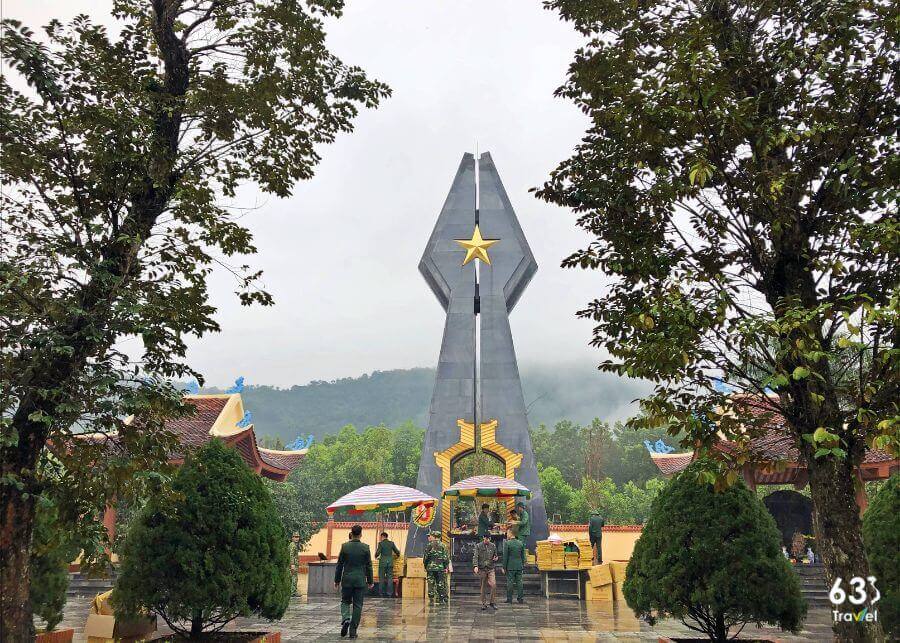
Po Hen Historical Relic Area is ranked as a national monument
Po Hen relic area includes four prominent points: Po Hen martyrs memorial,Que hill checkpoint,Po Hen border gate checkpoint and West hill observation tower. In particular,the 16m high memorial,built of reinforced concrete,has an image of three hands clasped together,symbolizing the three ethnic groups Kinh,Dao and San Chi working together. The five-pointed star in the middle of the stage represents the steadfast spirit of both the land and people on the frontier. The two stele houses next to it register soldiers and officers who died in the period 1979-1991.
Every year,on February 17,Po Hen border station holds a death anniversary ceremony for martyrs,reminding the younger generation of their indomitable spirit. The relic was renovated in 2010,on the occasion of Uncle Ho's 110th birthday anniversary,and has become a "red address" in educating patriotic traditions,encouraging the next generation to continue the glorious history of nation. The Po Hen Memorial towers amidst the mountains and forests of the Northeast,symbolizing the heroic spirit and courage of those who fell to preserve every inch of the sacred land of the Fatherland.
Xa Tac Temple
Xa Tac Temple was built in the early 13th century during the Tran dynasty,as a place to worship the Earth God and the Agriculture God,two gods symbolizing wet rice agriculture. In addition,the temple is also known as Xa Tac Dai Vuong temple,representing the role of the god protecting and blessing the land of Mong Cai.
In the minds of Vietnamese people,the tutelary god is not only the founder of the village but also a symbol of protection and safety for the population. The phrase "son Ha Xa Tac" reflects the broader meaning of Xa Tac,symbolizing the mountains,rivers,and country.
Xa Tac Temple,located near the border,is not simply a place of worship but also a sacred milestone to preserve the social order of the Fatherland. Currently,the temple also worships gods such as Hung Nhuong Dai Vuong Tran Quoc Tang and Cao Son Dai Vuong,remembering the merits of those who reclaimed this land.
Nam Tho Pagoda (Van Linh Khanh Tu)
Van Linh Khanh Pagoda is located on an area of more than 5,000m²,with an unclear historical origin. Based on the inscription on the bronze bell cast in 1843,there is information that Linh Khanh Tu has existed since 1754. Despite experiencing many ups and downs,the worship artifacts and statues here are still preserved quite fully.,proving that this pagoda is an important cultural heritage in the Vietnam-China border region.
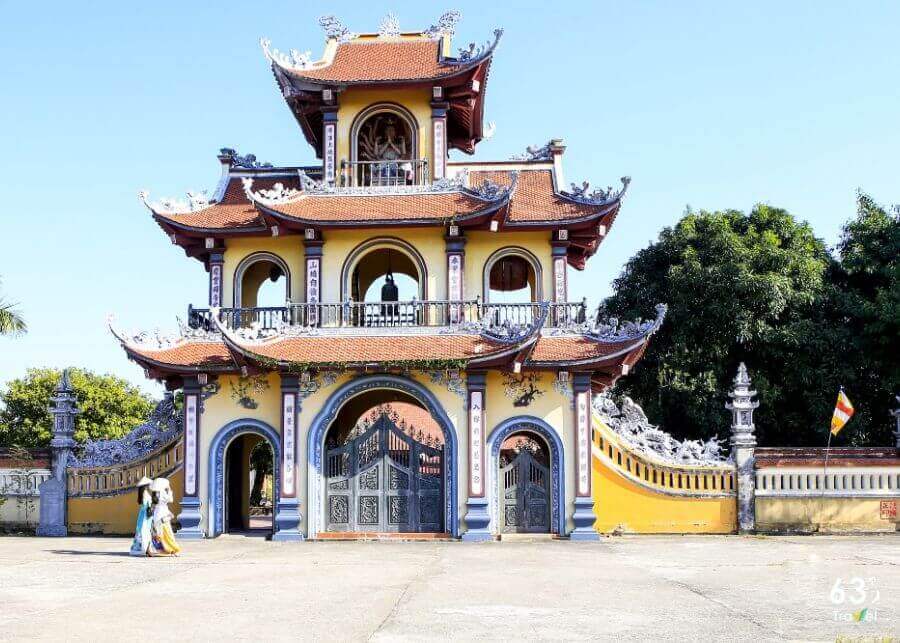
Nam Tho Pagoda (Van Linh Khanh Tu) Ranked as a National Monument
The pagoda was built in the shape of a Muslim letter,including main buildings such as the Tam Quan gate,the Patriarch's house,the Mother's house and the guest house. Although it has been restored many times,the mark of the Le Dynasty has faded,but the pagoda still retains 53 ancient statues,notably 4 statues of newborn Sakyamuni and 2 statues of Quan Am Tong Tu. The artifacts and carvings here reflect the talents of Vietnamese artisans,imbued with national cultural identity.
Not only is it a place of worship,Van Linh Khanh Pagoda is also associated with the history of the struggle to protect the Fatherland,attracting many Buddhists and tourists seeking purity and understanding of Buddhist teachings. This place hosts many major festivals such as the Buddha Shakyamuni,Vu Lan and Amitabha Buddha ceremonies,contributing to the rich cultural interference between communities.
Recognized as a national art monument in 1999,Van Linh Khanh Pagoda is not only a cultural symbol but also a milestone affirming territorial sovereignty in the border region of the Fatherland.
>> Should see: A collection of memorable experiences when traveling to Vietnam
Van Don commercial port relic
Van Don trading port is a busy trade center of East Asia,Japan,China,India and many other countries. It experienced a period of prosperity under the Ly,Tran and Later Le dynasties before being forgotten during the Mac dynasty. This commercial port relic not only marks the fight against foreign invaders but also reflects the strong development of trade and goods exchange activities.
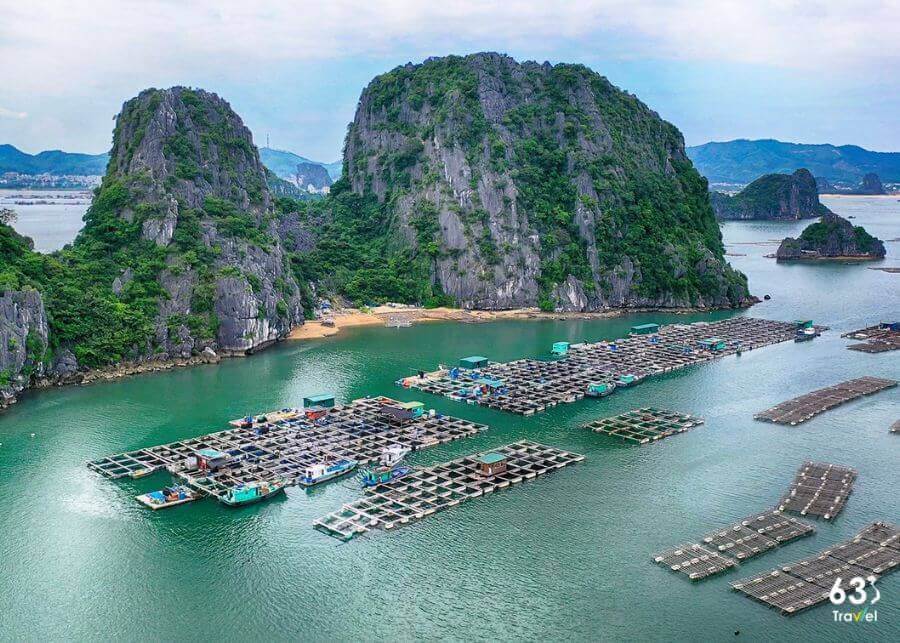
Van Don commercial port relic - the most ancient commercial port in Vietnam
In 2003,Van Don was recognized as a National Historical Site,with many precious artifacts from ancient wharves. By 2021,Quang Ninh province has proposed to recognize this relic complex as a special national monument. Today,the remaining traces of the commercial port are only pieces of porcelain,floors and ancient coins,but still affirm the important role of the boat wharf system distributed on the islands and coastal areas,from Mong Cai to Ha Long. .
For more than 700 years of existence,Van Don is not only a single port but also a network of yards,helping to reduce ship traffic and create favorable conditions for management. Artifacts discovered,especially at Cai Lang,show that the trading port was once a place to transship a variety of goods,from spices,ceramics to forest products.
Goods at Van Don are very diverse,with natural products such as spices,rhino horn,ivory and gold,pearls,and famous porcelain,exquisitely produced during the Ly Dynasty,not inferior to porcelain. China. Ly dynasty porcelain was so popular that it was exported to East India. Under the Tran dynasty,porcelain continued to develop with strong designs,loved by both foreign merchants and Chinese kings. Silk and brocade,although not accounting for a large proportion,with their exquisite quality and vibrant colors,are still popular items at this trading port.
Memorial area of President Ho Chi Minh on Co To island
The Historical Relic of President Ho Chi Minh Memorial Area on Co To Island marks the special event on May 9,1961,when Uncle Ho visited the island. This is the only place in the country where he agreed to erect a statue while he was alive,demonstrating his deep attachment to the island and sea.
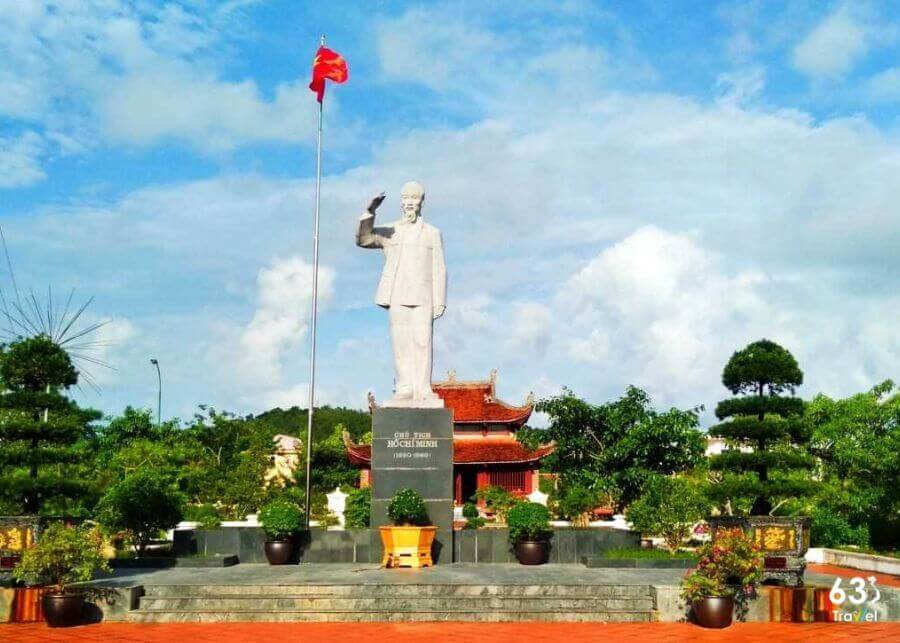
Memorial area of President Ho Chi Minh on Co To island
Built in 1968 and recognized as a National Monument in 1997,the memorial area has undergone many renovations and expansions but still retains its historical and cultural value. On January 18,2022,the Prime Minister recognized the relic site as a Special National Monument.
Today,the Memorial Area is not only a tourist attraction but also a symbol of pride and solid spirit for officers,soldiers and people of the island district,contributing to honoring cultural heritage and history of the nation.
Ngoa Van Pagoda
Ngoa Van Pagoda,also known as Ngoa Van Pagoda,means "the temple located on the clouds" with an altitude of more than 500m above sea level. From here,you can admire the beautiful scenery of rolling mountains and white clouds circling every early morning. Leaning against Ngoa Van peak,which is covered by clouds all year round,the pagoda is not only a historical building but also a Truc Lam Buddhist holy land,where Buddha Emperor Tran Nhan Tong once practiced.
The relic area consists of three floors with rich relics,from relics at the foot of the mountain such as Tan Long jungle to works on the slopes of Bao Dai mountain. In particular,the second layer with Nhi-shaped architecture,renovated in 2014,is the place where many important festivals take place. On the top floor,Ngoa Van relic stands out with its magical beauty,always covered by fog.
Not only does it have profound historical significance,Ngoa Van Pagoda also possesses beautiful natural scenery,with diverse vegetation,where you can admire ancient trees and lush bamboo forests. This is truly an ideal destination for those who love nature and want to explore the beauty of the mountains and forests.
Tran Dynasty Relic Area in Dong Trieu
The Tran Dynasty historical relic site in Dong Trieu is an impressive complex consisting of 14 relics with 22 attractions such as temples,shrines,mausoleums,towers and pagodas. All bear the historical imprint of the Tran dynasty and the Truc Lam Zen sect. This place stands out with many large-scale,typical cultural works such as Thai Mieu,An Sinh temple,Tran dynasty temple system,Quynh Lam pagoda and Ngoa Van pagoda,creating national architectural symbols. .
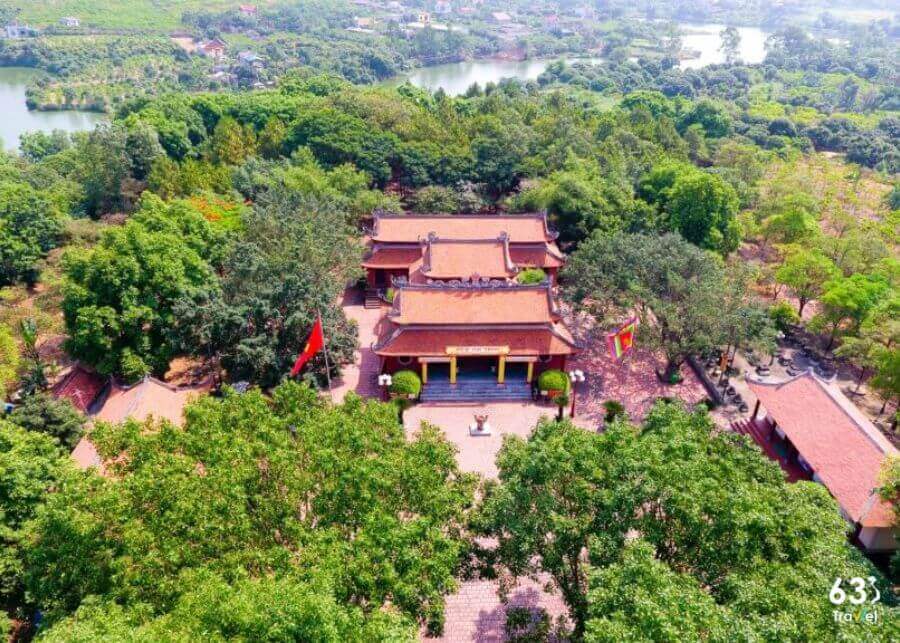
Tran Dynasty historical relic site in Dong Trieu Quang Ninh
Ranked as a Special National Monument according to Decision No. 2383/QD-TTg dated December 9,2013,the relic site not only has architectural value but is also a place to store many precious relics and antiques.,deeply reflecting history,culture and science. Moreover,this area also maintains many unique folk cultural activities,contributing to enriching the cultural identity of Dong Trieu land.
Yen Tu Historical and Scenic Area
Yen Tu relic site is famous for its title "sacred Buddha land",and is a complex of pagodas imbued with traditional architecture,attracting tourists from all over. Located on Yen Tu Mountain,also known as Tuong Dau Mountain,with an altitude of 1,068 meters,this area possesses a rich and diverse ecosystem.
Yen Tu is not only a convergence of historical relics associated with the Truc Lam Zen sect but also a beautiful destination with majestic mountain landscapes and fresh climate. This place is especially associated with Emperor Tran Nhan Tong,the founder of the Zen sect and the king who twice led the army and people to defeat the Yuan-Mongol army.
The relic area includes ancient temples,towers,statues and forests,adorned with magnificent landscapes such as Ngu Doi waterfall,Heaven's Gate and Yen Tu peak,where traditional architecture blends with majestic nature. great. Recognized as a Special National Monument under Decision No. 1419/QD-TTg dated September 27,2012,Yen Tu has become one of the bright spots of cultural and spiritual tourism in Quang Ninh.
Bach Dang Historical Relic
Bach Dang Historical Relic is located in Quang Yen Town and Uong Bi City,and is a historical witness to the glorious victory of the Tran Dynasty's army and people over the Mongol invaders in 1288. This place makes its mark. The profoundness of the Bach Dang battle,an important event in the defense of national independence.
Despite many ups and downs,traces of the battle are still present,reflecting the resilient spirit of the nation. Bach Dang Relics was recognized as a Special National Monument under Decision No. 1419/QD-TTg on September 27,2012,affirming the cultural and historical value of this place in the hearts of people and tourists. guest.
Ha Long Bay
The scenic Ha Long Bay is recognized as a World Heritage - Natural Wonder,a testament to the formation and development process of the earth,and is also the residence of ancient Vietnamese people. Ha Long Bay is a great work of nature's art,with thousands of rocky islands of various shapes and many interesting caves,creating a world that is both lively and mysterious.
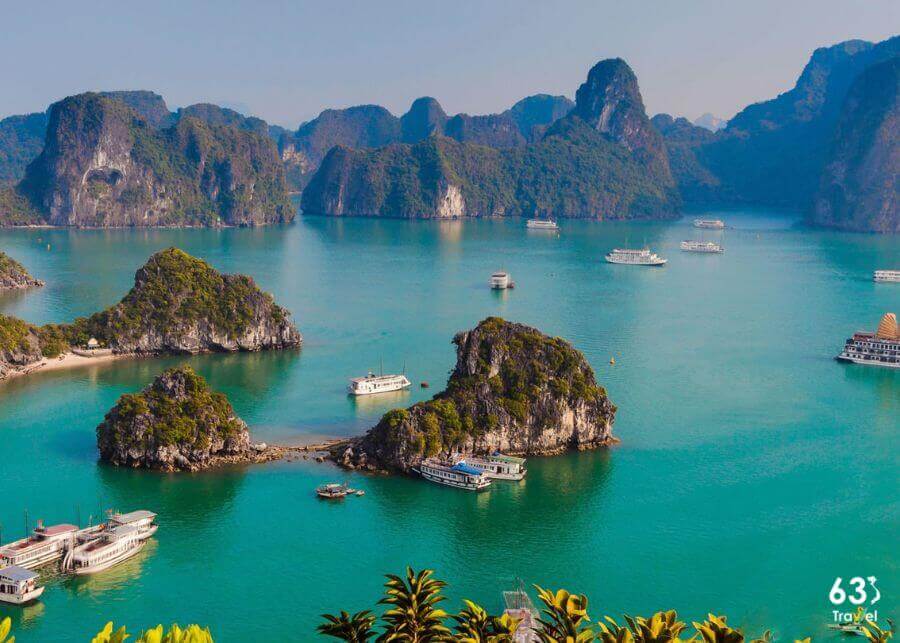
Ha Long Bay - Nature's work of art
Recognized twice by UNESCO for its outstanding global aesthetic values in 1994 and for geology and geomorphology in 2000,Ha Long Bay has an area of 434 km² and possesses 775 large and small limestone islands. This is not only a natural heritage but also a cultural symbol,preserved according to strict regulations. Recently,on September 16,2023,the Ha Long Bay - Cat Ba Archipelago complex was also recognized by UNESCO as a World Natural Heritage,affirming the special cultural and natural value of this land. .
Bai Tho Mountain
Bai Tho Mountain is one of the highest mountains in Ha Long with a height of 200 meters,standing out in the city thanks to its beautiful scenery. Half of the mountain is located on land,the other half reaches out to the sea,creating a majestic scene. From the top of the mountain,visitors can fully capture the poetic beauty of Ha Long Bay,recognized as one of the seven natural wonders of the world.
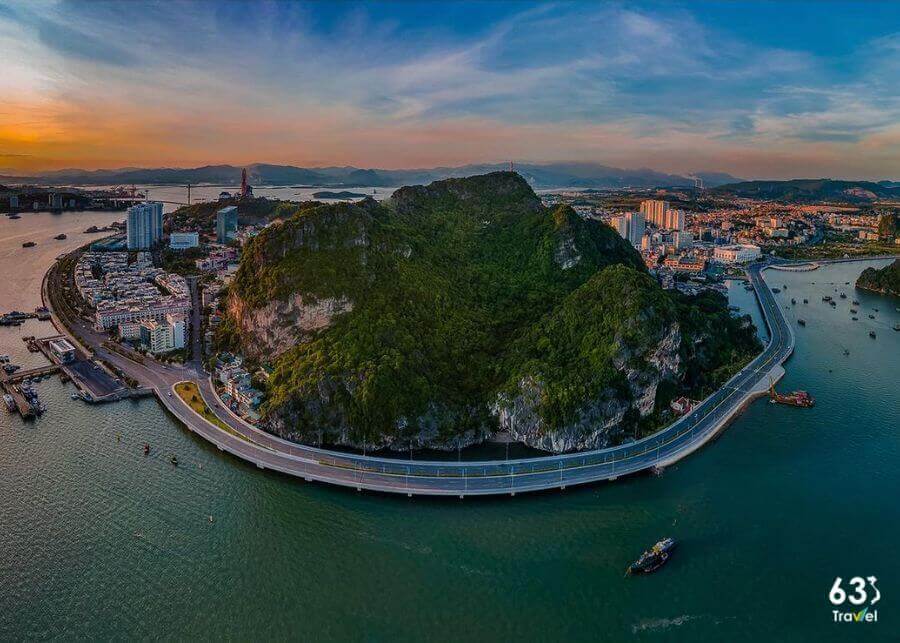
Bai Tho Mountain - a destination not to be missed when coming to Ha Long
Once named Tron Mountain,Bai Tho also preserves historical marks with 9 poems carved on stone,including works by Le Thanh Tong from 1468. These poems are not only valuable cultural heritage but It is also the soul of the mountain,making this place the pride of the people of Ha Long.
On the top of the mountain,a red flag with a yellow star flutters,marking the resilience of the people in the resistance war against the French. The stone stele engraved with the nation's heroic memories is also a stop not to be missed. From here,visitors will be overwhelmed by the perfect picture of nature,with clear blue water,green mountains and surfing boats,creating a peaceful and relaxing space,helping to dispel all worries.
The above article shares a list of 27 historical relics in Quang Ninh for readers to refer to and have an interesting experience. Hopefully,the information will be useful and help you have a wonderful trip to explore Quang Ninh!
Quang Ninh 7833 view
Update day : 04/11/2024